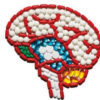
Zoloft appears to alter brain structures, say U.S. researchers
Experiments with monkeys showed that the antidepressant sertraline (marketed as Zoloft) significantly increased the volume of one brain region in depressed subjects but decreased the volume of two brain areas in non-depressed subjects. Conducted by researchers from Wake Forest Baptist Medical Center, the experimental results have been published in the journalNeuropharmacology. “These observations are important […]
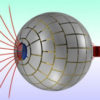
Magnetic wormhole connecting two regions of space created by Spanish physicists
Physicists at the Universitat Autonoma de Barcelona have designed and created in the laboratory the first experimental wormhole that can connect two regions of space magnetically. The tunnel transfers the magnetic field from one point to the other while keeping it undetectable. The researchers used metamaterials and metasurfaces to build the tunnel, so that the […]
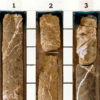
“Intraterrestrial” life found in rocks below the seafloor.
The discovery that ancient rocks harbored microbial life deep below the seafloor confirms a long-standing hypothesis that interactions between mantle rocks and seawater can create potential for life. The scientists behind the discovery, from the Woods Hole Oceanographic Institution (WHOI), Virginia Tech, and the University of Bremen, have reported their findings in theProceedings of the […]

How climate change created the modern dog
Appearing in Nature Communications, a new study of dog fossils suggests that the evolutionary path of whole groups of predators can be a direct consequence of climate change. “It’s reinforcing the idea that predators may be as directly sensitive to climate and habitat as herbivores,” said study co-author Christine Janis, professor of ecology and evolutionary […]
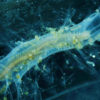
Marine organisms evolving in response to ocean acidification
Researchers at Plymouth University have found that polychaete worms living in acidified waters exhibit a tendency to nurture their offspring to a greater extent than those in more regular conditions. The polychaete worms in question live around volcanic vents in the Mediterranean. They grow and develop their eggs within the protection of the family unit […]
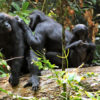
Bonobo communication similar to that of human infants, suggests new study
Researchers from the University of Birmingham (UK) and the University of Neuchatel (Switzerland) have found that wild bonobos, our closest living relatives in the primate world, communicate using a high-pitched call type, or “peep,” that requires context to be understood. The findings, published in the journal PeerJ, echo the context dependent manner in which human […]
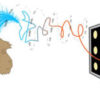
New technique for thought-controlled data input almost as accurate as one-fingered typing
When we type or perform other precise tasks, our brains and muscles usually work together effortlessly. But when a neurological disease or spinal cord injury severs the connection between the brain and limbs, once-easy motions become difficult or impossible. In recent years researchers have sought to give people suffering from injury or disease some restored […]
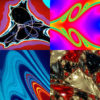
New definition of chaos proposed
The idea that the flapping of a butterfly’s wings might trigger a hurricane beautifully encapsulates the concept of chaos, where a small difference in initial conditions will cascade toward a vastly different outcome in the future. Mathematically, extreme sensitivity to initial conditions can be represented by a quantity called a Lyapunov exponent, which is positive […]
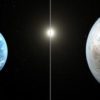
NASA discover Earth’s twin 1,400 light-years away
The Kepler mission has found the first near-Earth-size planet – called Kepler-452b – in the “habitable zone” around a G2 star much like our own sun. The Kepler-452 system is located 1,400 light-years away in the constellation Cygnus. “On the 20th anniversary year of the discovery that proved other suns host planets, the Kepler exoplanet […]

Could solar flares be triggering birth defects?
It’s known that airplane crews at high altitude are exposed to potentially harmful levels of radiation from cosmic rays, but could these cosmic rays pose hazards even at sea level? A new study into these potential terrestrial effects has just been published in the Journal of Geophysical Research. Study co-author Adrian Melott, professor of physics […]
